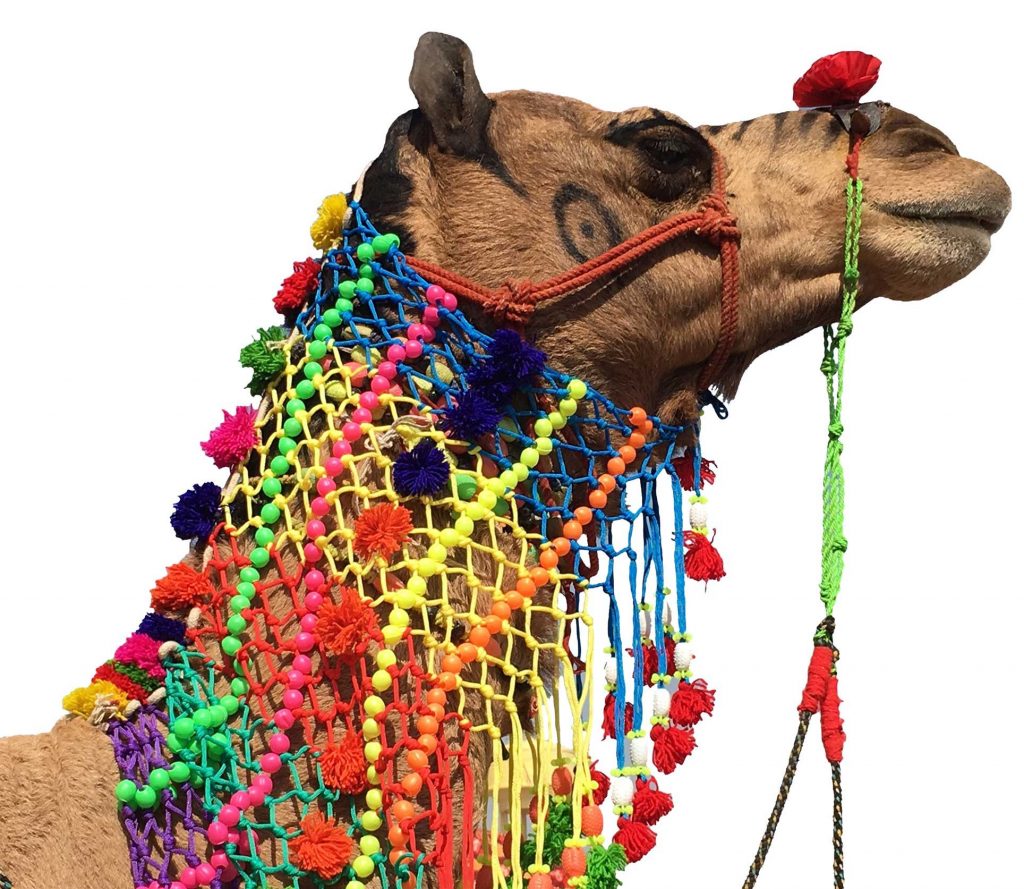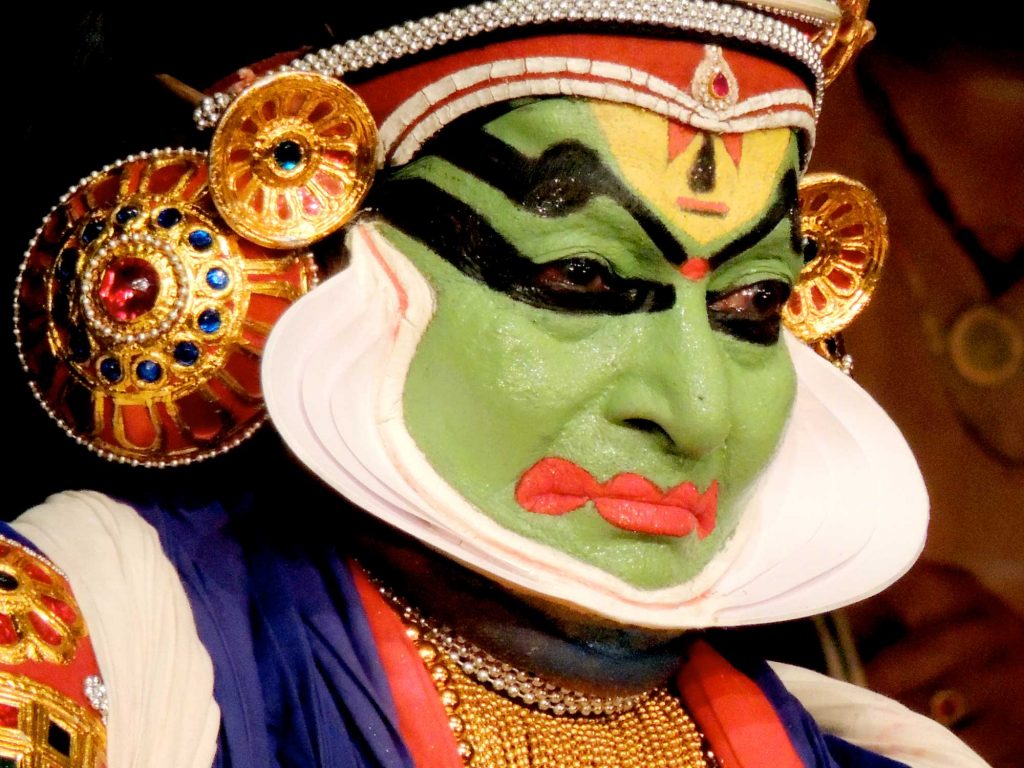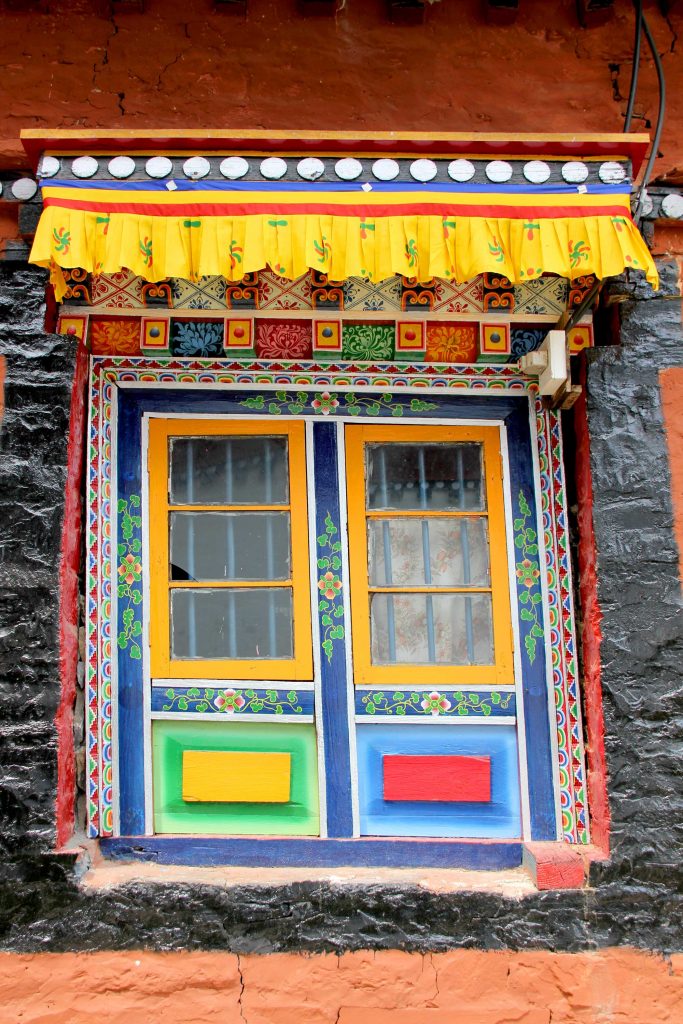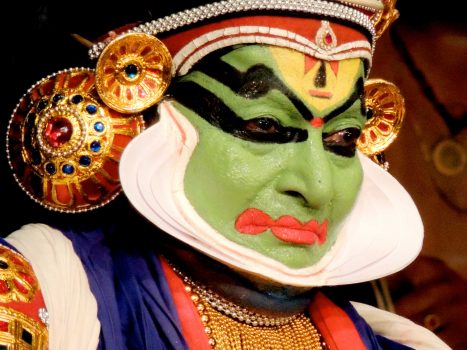Colours have different meanings in India’s culture
India is a land of vibrant colours. The sheer variety of the palette is eye-popping for the first-time visitor to the country. But there’s more to it than meets the eye, literally. Colours in India are deeply symbolic. They usually have a religious significance, and particular hues are chosen not merely because they suit a person but because it ties in with a specific occasion.
 Meaning and Deeper Meaning
Meaning and Deeper Meaning
Let’s take a look at three basic colours and their significance to begin with — red, yellow and black. At one level, all three are colours of spices almost synonymous with India — the fiery chilli, the healing turmeric and the pungent pepper.
Red is a very complex colour in the Indian context. It is at once the colour of power and sensuality, and of purity and fertility. On the one hand, it is associated with Goddess Durga, depicted as a fearsome force that destroys evil, her outthrust tongue stained red by the blood of the demons (symbolically, negative emotions like fear, anger and jealousy) she has destroyed. On the other, red is the auspicious colour worn by Hindu brides, and later, kumkum, the red powder that is applied along the parting of a Hindu woman’s hair signifies her married status.
Yellow in India stands for knowledge and joy, and also holiness. Indra, one of the Gods of the Hindu pantheon, is said to have woven the rays of the sun to make a garment for himself. Krishna and Ganesha, two of the most beloved deities, are usually depicted dressed in yellow. Turmeric is associated with prosperity and fertility, and by extension, the colour is important in Hindu rites.
Black, again, is a complex colour in India. It is the colour commonly associated with Shani, or Saturn, the inimical planet believed to bring difficulties and suffering for the period when it is in ascendance in a person’s birth chart. At the same time, it is the colour used to ward off evil. It is the colour of the kohl which enhances the beauty of the doe-eyes typical of Indians. It is the colour of the dot that is placed on the cheek or chin of babies, and of the thread tied to wrists and waists to keep away negative energy.
Turmeric yellow and kumkum red are auspicious colours, used on invitation cards for Hindu weddings and other ceremonies. Black, on the other hand, is never worn at weddings. It is also a colour commonly avoided in logos and other symbols as it is believed to bring ill-luck.
 The Stuff of Legend
The Stuff of Legend
Lord Ayyappa is the presiding deity of the Sabarimala temple in the southern Indian state of Kerala. The temple attracts one of the largest pilgrimages in the country. Every year, millions of people make the trek to the hilltop shrine. The pilgrims wear black. The colour symbolises the control Lord Ayyappa wields over Shani. The story goes that Lord Ayyappa made a deal with the malevolent planet — if his devotees observe a vow for 41 days of letting their hair and nails grow long, going barefoot, eschewing intoxicants and intercourse, eating only a lacto-vegetarian diet and wearing only black clothes, and undertake the arduous journey up the thickly forested hills to worship him at his temple, Shani would free them from his seven-year negative hold over them.
 Scientific Substance
Scientific Substance
Colour has been used as a tool for many centuries in many cultures. Modern scientific research bears out some of the premises on which such practices were based. For instance, red has been shown to be a stimulant (that’s why most restaurant décor is predominantly red). Probably the wisdom of the ancients zeroed in on that colour to symbolise energy and passion because both these states produce a rush of blood in the body, leaving it flushed. Similarly, yellow, with its association with sunlight, is seen as a positive, healthy shade. On the other hand, black, as a colour, or rather, absence of colour, is known to promote a somber mood.
Saying it in verse
Oh Mother, let the line parting thine hair,
Which looks like a channel … and … imprisons your vermillion,
Which is like a rising sun,…
Protect us and give us peace.”
From Adi Shankaracharya’s Soundarya Lahiri, translated by P.R. Ramachander
Udaye savitaa raktah raktashchaastamaye tathaa
sampattau cha vipattau cha mahataamekar Upataa)
(The Sun is red as he rises, he is red even as he sets. Similarly, great minds will be composed in happiness as well as in sadness.)
– Sanskrit sloka
